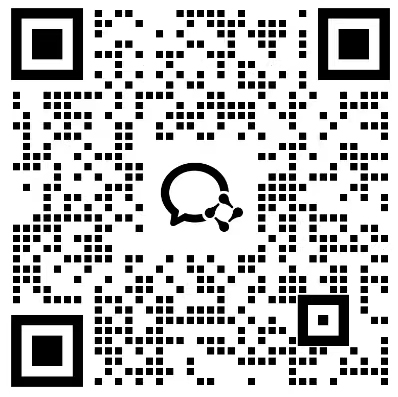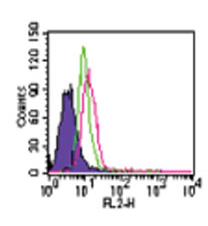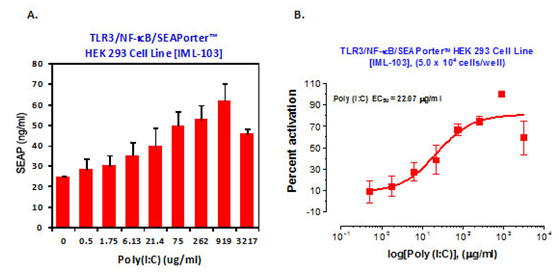
TLR3/NF-kB/SEAP Stable Reporter Cell Line、TLR3/NF-kB/SEAP 稳转报告细胞株
产品名称: TLR3/NF-kB/SEAP Stable Reporter Cell Line、TLR3/NF-kB/SEAP 稳转报告细胞株
英文名称: TLR3/NF-kB/SEAP Stable Reporter Cell Line、TLR3/NF-kB/SEAP 稳转报告细胞株
产品编号: IML-103
产品价格: 0
产品产地: imgenex
品牌商标: imgenex
更新时间: 2023-08-17T13:40:59
使用范围: null
- 联系人 : 李自转
- 地址 : 上海市浦东新区天雄路166弄一号楼三层南单元
- 邮编 : 200030
- 所在区域 : 上海
- 电话 : 139****5640 点击查看
- 传真 : 点击查看
- 邮箱 : lizizhuan@yeasen.com
- 二维码 : 点击查看
TLR3/NF-kB/SEAP Stable Reporter Cell Line
Description(产品描述)
The TLR3 reporter cell line is a stably co-transfected cell line which expresses full-length human Toll-like receptor 3 (TLR3) and the secreted alkaline phosphatase (SEAP) reporter gene under the transcriptional control of an NF-kB response element. The TLR3 reporter cell line has been validated by flow cytometry (Fig. 1) and ligand dose response assay (Fig. 2).
IMGENEX is pleased to offer the TLR3/NF-kB Reporter Assay as a service
Complete Growth Medium(完全培养基)
DMEM with 4.5 g/L glucose + 10% FBS + 4 mM L-glutamine + 1 mM sodium pyruvate + 100 units/ml penicillin + 100 ug/ml streptomycin + 10 ug/ml blasticidin + 500 ug/ml G418 (Geneticin)
Note: The selection agents for this stable cell line are blasticidin and G418.
Application(应用)
The TLR3 reporter line can be used for TLR3-dependent functional assays as well as screening of TLR3 agonists or antagonists.
Product Handling Protocol(产品处理协议)
Note: Please read the entire data sheet before thawing. It is recommended that users follow good tissue culture practice. The TLR3 reporter cell line is sterile and all work should be performed under sterile conditions.
1. Prepare a sterile 15-ml tube with 9 ml fresh medium without selection agents pre-warmed at 37oC.
2. Thaw the TLR3 reporter cell line vial quickly in a 37oC water bath, keeping the cap portion out of the water to avoid any possible contamination.
3. Upon thawing, take the vial out of the water and clean it with 70% ethanol to decontaminate.
4. Transfer contents to the 15-ml tube (Step 1) and mix with medium by gentle inversion of tube.
5. Centrifuge at 1,000 RPM for 5 minutes.
6. Remove supernatant and resuspend pellet in 10 ml of fresh medium without selection agents.
Note: It is important to grow the reporter cells at this stage without any selection agents.
7. Transfer the TLR3 reporter cell line into a 25-cm2 tissue culture flask and incubate at 37oC in a 95% air-5% CO2 mixture.
8. After cells settle down (in 1-3 days), remove the medium and replace with fresh complete growth medium containing selection agents.
9. At 70-80% confluency, detach the cells by trypsinization and split into new flasks with fresh complete growth medium.
10. Freeze the TLR3 reporter cell line at 3~4 x 10^6 cells/ml per cryogenic vial. For optimal viability after freezing, freeze cells when they have reached log phase growth (95-98% confluency). Detach by trypsinization at 37oC for 5 min, and harvest by mixing with 3 volumes of fresh medium followed by centrifugation (Step 5). Resuspend the pellet in freeze media (FBS with 10% DMSO). Add suspension to cryogenic vials in 1 ml aliquots. Place cryogenic vials, in a tissue culture approved cryogenic vial container, in -80oC freezer for 24-48 hours. After 24-48 hours, move the vials into liquid nitrogen storage.
Safety Considerations(安全注意事项)
Assume all cultures are hazardous since they may harbor latent viruses or other organisms that are uncharacterized. The following safety precautions should be observed.
- Use pipette aids to prevent ingestion and keep aerosols down to a minimum.
- No eating, drinking or smoking while handling the TLR3 reporter cell line.
- Wash hands after handling the reporter cell line and before leaving the lab.
- Decontaminate work surface with disinfectant or 70% ethanol before and after working with cells.
- All waste should be considered hazardous.
- Dispose of all liquid waste after each experiment and treat with bleach.

Figure 1. Flow analysis of TLR3. Intracellular staining of TLR3 in the TLR3 reporter cell line was analyzed by flow cytometry using a PE-conjugated anti-TLR3 antibody (IMG-315D). Flow samples were prepared using the Intracellular TLR Staining Flow Kit (10098K). Purple: Cells alone; Green: NF-kB/SEAPorterTM HEK 293 cell line (IML-101) stained with 1ug anti-TLR3-PE (IMG-315D); Red: TLR3 reporter cell line stained with 1 ug anti-TLR3-PE (IMG-315D).

Figure 2. Evaluation of the functional activity of the TLR3 reporter cell line by ligand dose response assay. TLR3/NF-kB SEAPorterTM HEK 293 cells (IML-103) were plated in 96-well plates at 5 x 10^4 cells/well. After 16 h, cells were stimulated with various amount of poly(I:C) (IMG-2203) for 24 h. SEAP was analyzed using the SEAPorter Assay Kit (10055K). A. poly(I:C)-mediated TLR3 activation, as measured by SEAP activity, was increased in a dose dependent manner. B. The values from (A) were used to determine the EC50 of poly(I:C). The EC50, or the half maximal activity concentration, represents the concentration of poly(I:C) that was required for 50% activation of TLR3 as measured by SEAP activity.
Data Summary: Poly(I:C) activated the IML-103 cell line in a dose response manner, of which EC50 was measured as 22.07 ug/ml.
订购信息:
|
货号 |
名称 |
产地 |
规格 |
报价/元 |
货期 |
|
IML-103 |
TLR3/NF-kB/SEAP Stable Reporter Cell Line |
imgenex |
1Vial |
18244 |
2-3周 |
